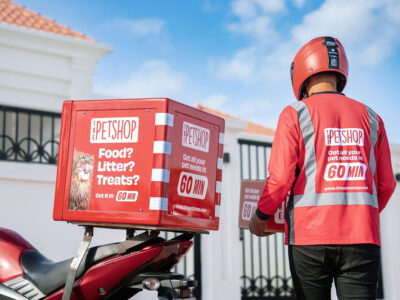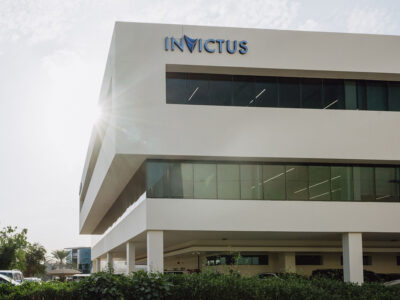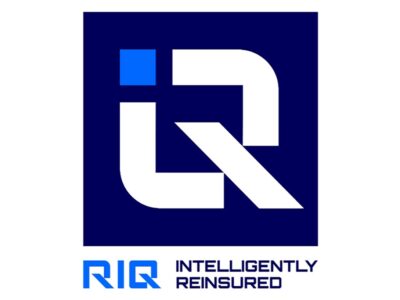Shoppers’ health concerns and misconceptions must be tackled to add crackle and pop to morning profits in the region.
“The growth of the breakfast category has been directed by the double-digit leap in sales of breakfast cereals in recent years,” according to Federica Verna, regional marketing manager Middle East & Africa for Nestle’s breakfast cereals.
The main challenge for the breakfast sector is adapting to the changing rhythm of life and eating habits.
The greatest barriers to its victory are time and enjoyment, she says, which has fuelled the boom in ready-to-eat products.
The limited time typically experienced in the morning has prompted campaigns to transformer consumers’ habits.
Verna says the company’s greatest rival in Kellogg’s. Nestle has leapfrogged its competitors in Saudi Arabia, she says, yet it comes in as second best in other markets in the Gulf.
Kellogg’s Middle East established its Dubai office in 1999, and is now present in 12 countries across the GCC and the Levant. According to general manager Martin Tomlinson, the region is one of extremes spanning from the richest per capita nation in Qatar to one of the poorest, Yemen.
The UAE is the cereal giant’s strongest market per capita consumption, in which it witnessed an impressive sales jump of almost 30% in 2007, most likely triggered by the buoyancy of the market in areas with high expatriate populations.
In the past two years, the UAE has experienced “mega growth,” and the company currently presents 18 European-produced SKUs packed in English and Arabic boxes, such as Frosties, Corn Flakes, Coco Pops, Special K and All Bran.
Corn Flakes is its biggest seller, while Special K – currently racing ahead of Corn Flakes in Europe – is still gaining momentum in the Middle East.
“In all of the Gulf markets, we have a dominant market share and we are clear market leaders. In Saudi Arabia, we are neck and neck with Nestle, yet it is the market offering the greatest opportunity.”
“Saudi Arabia holds a lot of untapped potential and has an immature category, so that’s really where we need to grow.”
The company is targeting consumers in the Kingdom by investing in communication for mothers about the kids’ brands. “We spend about 20% on communication, and for us to grow the category in the way we want is an investment.”
“As a corporate, Kellogg’s is willing to invest in the future of this region, one of great potential.”
Tomlinson emphasises that educating consumers on the importance of cereals as part of a healthy breakfast to wipe out the misconception that they are merely for children is crucial to the future growth of the category in the Middle East.
“Local consumers often consider cereals as fun food for kids, however our strategy is to change that perception.”
“We are helping people to understand that cereals have added vitamins and nutrients, and are wholesome, healthy product.”
“In Europe, there are a lot of obesity and nutritional debates, and the big companies tend to be pulled into that and almost blamed for that, and they have to defend themselves,” he comments.
Tomlinson says Kellogg’s Middle East is eager to become part of the solution to analogous debates in this region by engineering above and below the line campaigns, including its marketing drive for Corn Flakes’ K-Essentials.
The team’s labours have reaped dividends, and Tomlinson reveals sales have doubled over the past four years.
“That on-the-ground focus through consumer research and understanding, investment and finding the right triggers has certainly worked. It is an exciting time to be in a region where we are developing a category and the products within it.”
Saudi Arabia holds a lot of untapped potential and has an immature category, so that’s really where we need to grow.
“We have done a lot of consumer research on cereals as a whole and what consumers think of breakfast. Do they have breakfast? What do they have for breakfast? What is seen a healthy product? What is seen as a non-healthy product? Through that research, we will identify ways to communicate the nutritional values of cereals.”
Verna says that many consumers in the Middle East are lacking knowledge concerning the health value of the first meal of the day.
“Nestle is committed to informing consumers about the relevance of having a proper breakfast and the benefits of the cereals category, in particular, using different media tools.”
Verna says breakfast cereal shelves require improve organisation to facilitate consumer choice and that cereals should not be located next to confectionery aisles.
“In some markets, cereals are located next to milk, due to the link between the two categories and it works extremely well.”
Waseem Halabi, country manager – UAE, Al Safi Danone puts forward the idea that retailers should clearly identify the breakfast category on shelves across the SKUs, prompted by the success of international retailers that have implemented the strategy.
Joint venture Al Safi Danone entered the UAE three years ago and has since witnessed rapid growth in its rise to become one of the top main dairy suppliers.
The company has driven innovation in the category with Actimel, which it has positioned as a breakfast dairy drink.
“Consumers are more and more health cautious and they choose products which have a health-added value, so our products are the logical, ideal choice for them.”
“The main challenge for the breakfast sector is adapting to the changing rhythm of life and eating habits.”
“Quick breakfast meals that can be consumed instantly at the office or in the car are more tempting for shoppers, and as manufacturers we should match these consumer expectations with the size, weight and shape of products.
“Actimel is the number one brand leading the health dairy drink category with a market share of 70%. Also, we are the leaders with Activia Laban product with a market share of 55% in the KA.”
Market share has also risen in the past four months after the launch of Activia’s new packs, the roll out of Danette’s new flavours and thorough above the line campaigns.
Armed with extensive global knowledge, Kellogg’s has taken cultural sensitivities on board in its approach to marketing brands such as Special K in the region, for example it has managed to maintain the same messages surrounding shape management without needing to show as much of the human form as found in European advertising campaigns.
“With Special K, for example, the needs of a woman don’t vary from Arabia to South America to Timbuktu.”
People have become more informed and educated, and they are looking more closely at the nutritional content of all the products they eat.
Nestle’s Fitness and its extension lines have been designed to react to many women’s desire to get into shape or keep their figures.
The range comes from CPW, a joint venture between Nestle and General Mills, which was established in 1990 and has developed cereal brands for an assortment of taste profiles, including Chocapic, Trix, Cocoa Puffs, Cookie Crisp, Crunch, Lion, Nestle Corn Flakes and Cheerios.
Verna points out that the fact that all its products are made with wholegrain has put forward a USP in the market.
“People who eat wholegrain foods tend to lose weight. Nestle launched a new campaign in 2007, advertising the Fitness range through a new selling line ‘Take it off and keep it off’, which leveraged the possibility of keeping weight off.”
The campaign involved on-pack communication, ad hoc TV advertising, print campaigns, and sampling activities at supermarkets and fitness in key markets.
Verna says the campaign has allowed the brand to effectively tackle its direct competitor Special K. The company has also undertaken successful partnerships including its recent Spiderman promotion.
Fitness & Chocolate’s triumphant arrival in Lebanon confirmed the trend towards healthy and added value products.
The company has also recently introduced Cookie Crisp in the kids segment – which tastes like chocolate chip cookies but is a ready to eat cereal – and re-launched Lion, targeted at teenagers.
Relationships with the distribution network have also been a key to business, Tomlinson from Kellogg’s says, as loyalty and long-term connections have been established.
The company’s holds conferences for its distributors and sales teams, which has strengthened its share of focus.
“Next month we are going to Dammam, Riyadh and Jeddah, and we will be speaking to everyone from our distributor Binzagr. We will be telling them about what is new, what is coming.”
“We will be listening to what their challenges are, and how we can overcome and address them.”
The overriding challenge at present is key accounts as says, as “they are becoming more and more expensive and demanding. They are also becoming increasingly important and dominant.”
“They tend to take a share of focus that is sometimes not in ratio with the investment we have to put behind them. When you are giving more investment to the key accounts, the traditional trade and wholesalers are asking why they are not getting it.”
Kellogg’s 100-year history of developing and delivering quality products for a diversity of breakfasts, age groups and needs combined with sound, responsible marketing have been imperative to its success in the region, Tomlinson says.
Packaging is geared towards different audiences, for example cereal bars are responding to the movement towards convenience worldwide. The cereal bar portfolio will be extended in 2008.
In the year ahead, Kellogg’s Middle East intends to drive innovation with Coco Pops, and will unveil a new variant of chocolate cereal and Corn Flakes with honey and nut.
The launch of Special K Red Berries, one of the company’s biggest selling products, will be another feat for the company.
Geographical expansion is high on the agenda. Three years ago, the company pinpointed Yemen, Oman, Iraq and Syria as “opportunistic markets,” and has since developed its presence in these markets.
“We will always be looking at putting new products on the shelves in markets.”
“In Iran, we are present in certain areas of Tehran. It’s a much more structured entry to market in those countries,” he adds.







